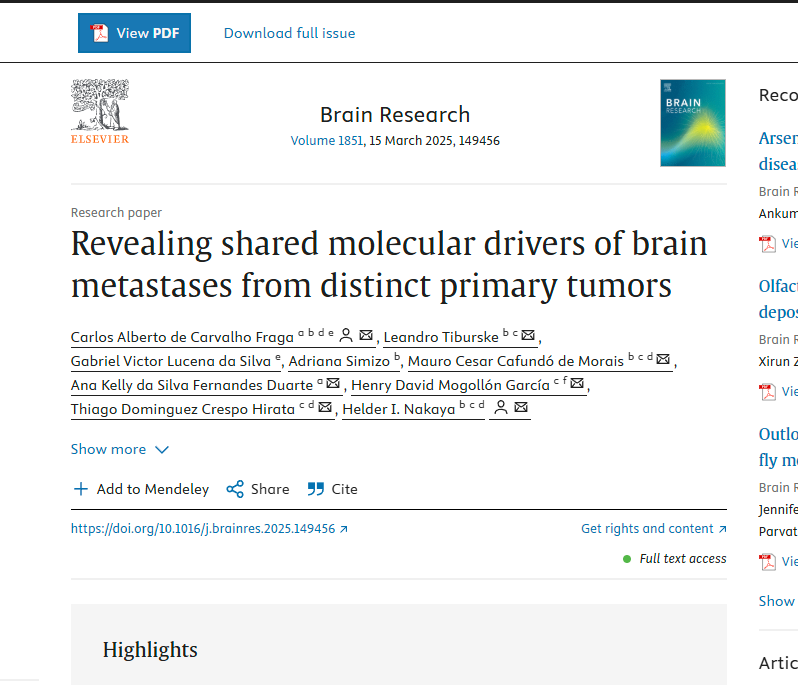Revealing shared molecular drivers of brain metastases from distinct primary tumors.
Brain metastasis is the most common type of brain cancer, associated with significant neurological dysfunction and a poor prognosis. We investigated the transcriptome of 128,421 single-cells of 36 brain metastases, originating from a variety of primary tumors, including melanoma, breast, lung, ovarian, colorectal, and renal cancers. Our aim was to identify common molecular factors across these tumors, shedding light on key interactions that facilitate tumor establishment in the brain. We specifically focused on the dynamics of the blood-tumor barrier and its effects on endothelial cells, pericytes, and astrocytes. Our analysis decoded complex cell-cell communications, emphasizing the crucial role of astrocytes in the tumor microenvironment (TME). This provided insights into how these interactions impact the permeability of the blood-tumor barrier and contribute to the development of brain metastases. We identified the VEGFA, SEMA3, and SPP1 pathways as key regulators in brain metastasis, affecting vascular permeability and cellular dynamics. Spatial transcriptome analysis confirmed our findings and linked these pathways to TME enrichment. The pronounced expression of VEGFA by cancer cells suggests a significant activation of angiogenic pathways, influencing vascular responses and the intricate architecture of brain tissue. The interplay of these signaling pathways underlines the complexity of molecular interactions that define the microenvironment of brain metastases.
Authors
de Carvalho Fraga CA, Tiburske L, Lucena da Silva GV, Simizo A, et al.
External link
Publication Year
Publication Journal
Associeted Project
Network & Precision Medicine
Lista de serviços
-
RASL11A, member of a novel small monomeric GTPase gene family, is down-regulated in prostate tumors.RASL11A, member of a novel small monomeric GTPase gene family, is down-regulated in prostate tumors.
-
Splice variants of TLE family genes and up-regulation of a TLE3 isoform in prostate tumors.Splice variants of TLE family genes and up-regulation of a TLE3 isoform in prostate tumors.
-
Concepts on Microarray Design for Genome and Transcriptome AnalysesConcepts on Microarray Design for Genome and Transcriptome Analyses
-
The iron stimulon of Xylella fastidiosa includes genes for type IV pilus and colicin V-like bacteriocins.The iron stimulon of Xylella fastidiosa includes genes for type IV pilus and colicin V-like bacteriocins.
-
Origins of the Xylella fastidiosa prophage-like regions and their impact in genome differentiation.Origins of the Xylella fastidiosa prophage-like regions and their impact in genome differentiation.
-
The role of prophage in plant-pathogenic bacteria.The role of prophage in plant-pathogenic bacteria.
-
Genetic control of immune response and susceptibility to infectious diseases.Genetic control of immune response and susceptibility to infectious diseases.
-
Building capacity for advances in tuberculosis research; proceedings of the third RePORT international meeting.Building capacity for advances in tuberculosis research; proceedings of the third RePORT international meeting.
-
São Paulo School of Advanced Sciences on Vaccines: an overview.São Paulo School of Advanced Sciences on Vaccines: an overview.
-
A reasonable request for true data sharing.A reasonable request for true data sharing.

